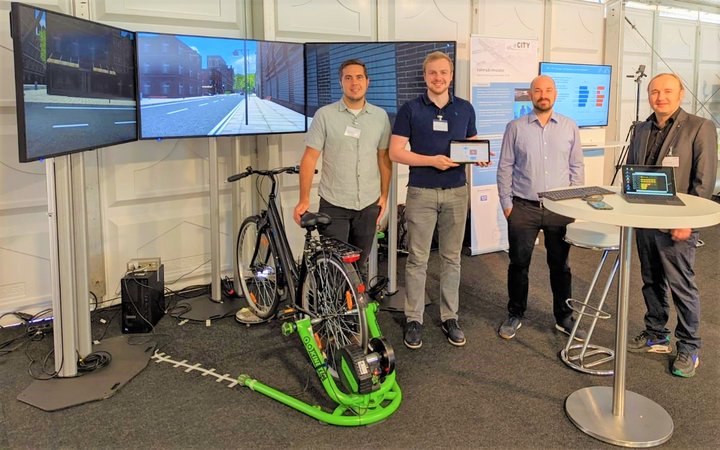To find out how automated driving can be efficient, comfortable and safe for all road users, the Chair of Ergonomics collected empirical data in driving simulator and pedestrian studies, traffic observations and an online survey. The results showed that autonomous vehicles should communicate with other road users both implicitly, for instance via the trajectory, and explicitly via external displays. The drivers of autonomous cars should be supported in the best possible way by LED concepts inside the vehicle and by augmented reality displays.
Beyond that, however, questions remain until automated vehicles are part of everyday life and interact safely and comfortably with their occupants and the surrounding traffic. To get closer to this goal, the question of long-term effects, interaction in complex multi-agent scenarios, and the integration of automated vehicles into an overall mobility concept that goes beyond privately owned vehicles arises.
The Chair of Traffic Engineering analyzed and modeled how the safety and transport efficiency of cyclists inside can be ensured when autonomous cars are driving in complex urban traffic. In addition to a visualization database, the researchers developed an autonomous vehicle model for use in microscopic traffic simulations and a prediction model for cyclist maneuvers. They also worked on optimizing the cooperation of automated vehicles and cyclists at unsignalized intersections and on creating a communication concept with mobile devices. The positive result: The predictions not only increase the safety of cyclists, they also save time.
Contact: Alexander Feierle, Georgios Grigoropoulos, Dr. Andreas Keler
Info about the project:
https://www.mec.ed.tum.de/en/lfe/forschung/projekte/city/
